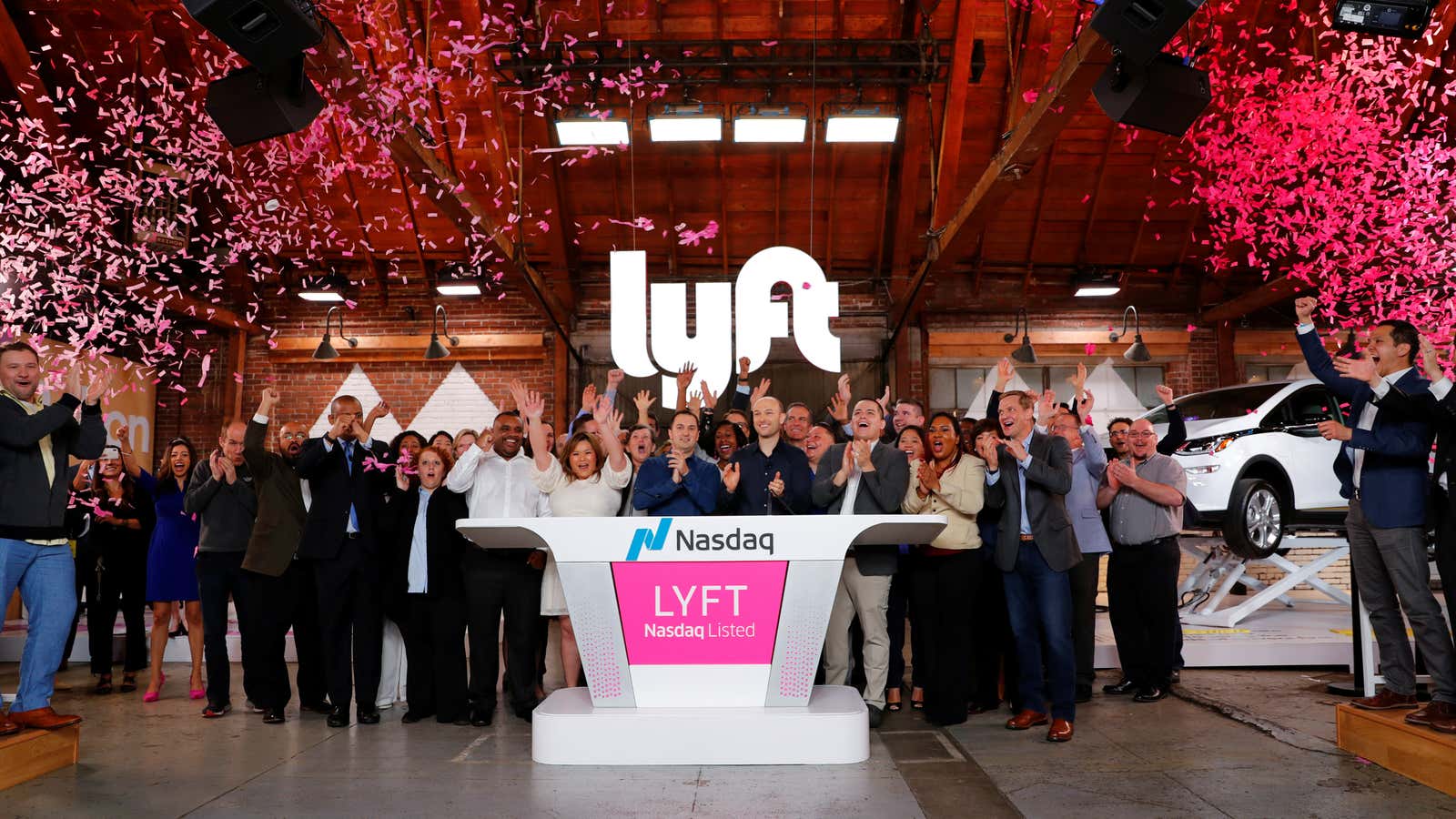Big initial public offerings aren’t as common as they once were. Firms stay private longer, which makes the recently announced IPOs of Lyft, Pinterest, and Uber all the more exciting. These are companies that have become integral to many peoples lives and for many, it may seem like a great idea to buy a piece of them now that you can. Just think if you bought shares of Amazon, Apple, or even GE when they first went public.
But don’t fall for the hype. IPOs are risky. If you compare their performance to more established stocks, it just isn’t worth it. The basic rule of finance is if one portfolio is riskier than another, yet both offer a similar expected return, avoid the excessively risky one. While IPOs do offer more potential reward, its not enough to justify the chance they’ll drag your portfolio down. If you want to own a piece of Uber, it may be better to wait a year.
Efficient markets and IPOs
Many financial economists believe in some form of the Efficient Market Hypothesis. It’s a theory that asset prices reflect all the available information in the market. This offers no guarantees, but if they believe in efficient markets, investors can feel somewhat confident that prices will only make huge jumps when new information is revealed. Even some die-hard adherents of efficient markets stay away from IPOs, however, in part because it takes time for markets to incorporate all the information about new stocks efficiently, and until then, prices may be volatile. Stock prices are a function of supply and demand but the first IPO price, often set by the underwriters, does not reflect market demand. Once it is traded it takes time for the market to price it efficiently. By their nature, newer companies pose more uncertainty because their ability to thrive, adapt, and grow into a big company is unknown.
Most of the time the stock price will increase shortly after the IPO, but the fact that the IPO price will probably rise, at least initially, doesn’t mean it’s initial price is a bargain. Shares tend to jump around as the market gropes to find a price as new information is revealed, and this can pose considerable risk. Both Lyft and Snapchats are trading at prices are below their initial offering price. Blue Apron’s stock price rose, only to fall and it’s still falling more than a year after its IPO.
Facebook and Amazon
The first six months or year also doesn’t tell you much about a company’s long-term prospects. Facebook’s price fell during the first year and eventually rose. While Amazon looks today like it was a great deal—if you bought in at the IPO you’d have made a 122,000% return today—that is not the norm, and even Amazon came with lots of uncertainty. In its first five years the stock price was extremely volatile and it was hard to predict the success it would become.
The expected increase in price from most IPOs is not enough to justify the chance that it won’t pay off. Research based on IPOs from 1965 to 2005 estimate an average monthly initial return of 22% but it typically moves up and down (a measure of risk called volatility) a whopping 55%. Meanwhile the S&P 500 returned a more modest 8.7% in the same period, but it normally moves only within a 14% range. In finance, weighing risk and reward involves making a calculation based on the ratio or return and volatility. The estimates consistently show investors are better off just holding an S&P 500 index fund than investing in a basket of newly IPOed stocks.
Of course, these data are based on historic IPOs. Since the dot com boom of the late 1990s, there have been fewer public offerings because more companies prefer to raise money in the private market or don’t have the resources to deal with the extensive compliance involved with being public. Economist Jay Ritter argues there are fewer IPOs because it is harder for smaller companies to compete and grow in the global economy. In theory, this could all mean the companies that do go public are of a higher quality since they’re more mature, have the resources to handle compliance, and already been vetted by private markets. Ritter’s estimates suggest more recent IPOs have performed a little better than they had in the past, but when you account for the risk involved it is still better to stick to a market index.
There is no shame in sitting out an IPO and waiting a year to see how the market takes to a stock. You may miss out, but any promise of big returns can’t compensate for the risk that comes with it. Especially when the company going public freely admits it may never earn a profit.
